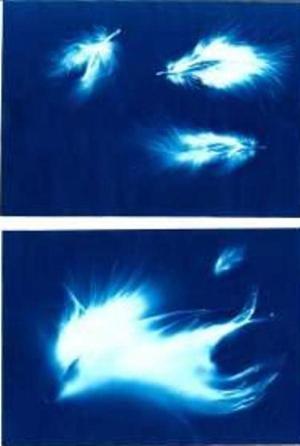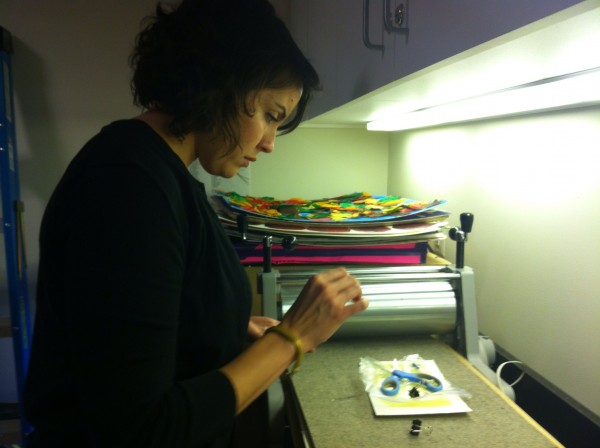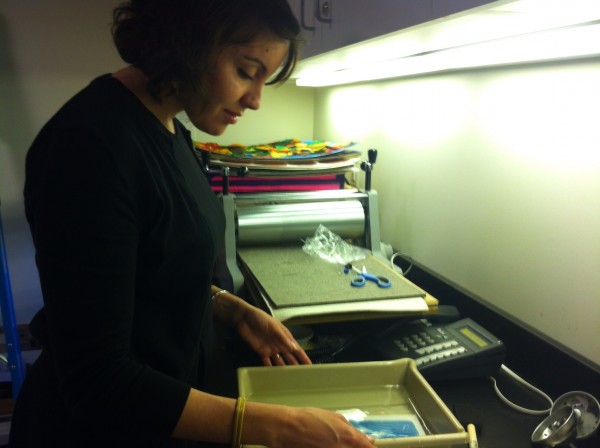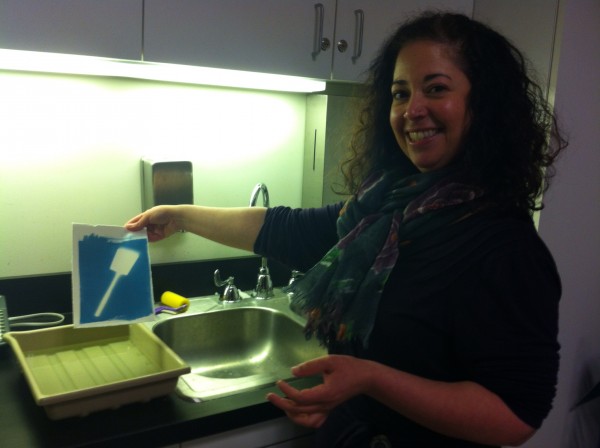We’ve been talking cyanotypes here with Snapshot in the galleries. The show features a few photographs of that process by Henri Rivière and last week we held a workshop. So what is a cyanotype?
Cyanotype is a 170 year old photographic printing process that produces prints in a distinctive dark greenish-blue. The word cyan comes from the Greek, meaning “dark blue substance.”
The process was invented by Sir John Herschel, a brilliant astronomer and scientist, in 1842. (His father was the astronomer Sir William Herschel, who discovered the planet Uranus. Interestingly, Uranus, due to mostly methane gas in its atmosphere, appears cyan blue.)
However, Herschel did not use cyanotype for photography, but for reproducing notes. It was a family friend, the botanist Anna Atkins, who used the cyanotype printing process in 1843 to create an album of algae specimens. She created the images by placing objects directly on photosensitive paper; this process is called a photogram (unless you are Man Ray, in which case you call it a rayograph). She is regarded as the first female photographer.
Compared to other photographic printing processes, cyanotype is easy and inexpensive. No darkroom is needed, instead it uses the power of the sun and iron salt solutions rather than the silver salt solution of black and white photography. Ferric ammonium citrate and potassium ferricyanide are combined, and exposure to UV light creates ferric ferrocyanide, also known as Prussian Blue (named for the color of the Prussian military uniforms.) The cyanotype process was also used to create copies of technical and architectural plans, and these copies were called blueprints; even though the cyanotype process is no longer used, any construction document or detailed plan is still referred to as a blueprint.
Although most of today’s digital cameras have settings like “black and white,” “sepia,” and “blue,” the “blue” is clearly not a cyanotype. Mixing up your own home alchemy is not recommended, since the chemicals are, as chemist and photographer Mike Ware writes, “toxic if ingested . . . and it will obviously stain skin, wood, clothes, textiles, household pets and any other absorbent surfaces.” However, there are easier ways to work your own cyan magic.
You could do-it-yourself. Even Martha Stewart has instructions online that make me want to Do It Now!
Or you can buy ready-to-print supplies online.
Or, for instant gratification, our Museum Shop carries a Sunography kit, containing six pieces of 5″x7″ coated-on-both-sides archival paper. You don’t have to use a whole sheet but can cut it to make smaller images. All you need is your inspired creativity and our friend the Sun.
Finally, here’s how to care for your cyanotypes.
And remember, if you make a photogram, you can always rename it after yourself, just like Man Ray.
Ianthe Gergel, Museum Assistant





